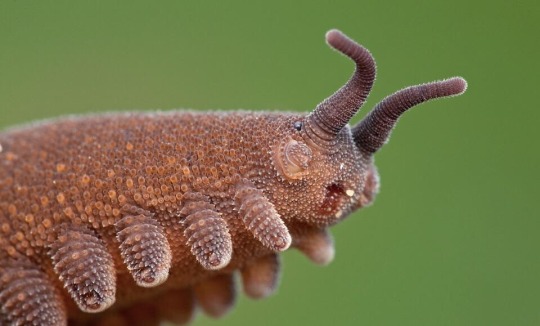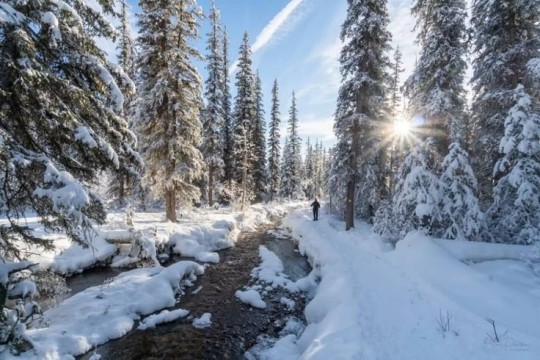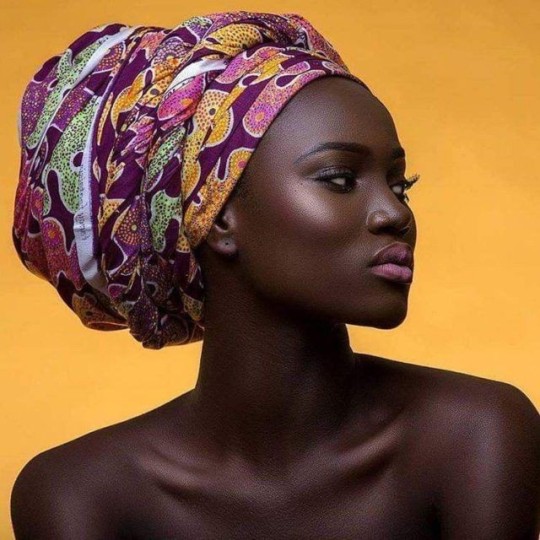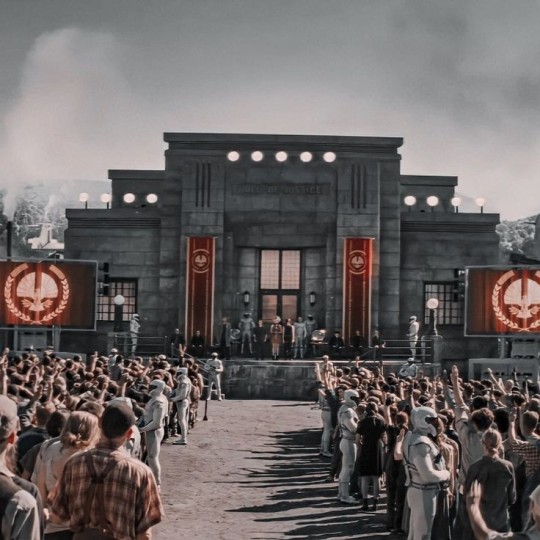#Agricultural Density
Explore tagged Tumblr posts
Text
Robotic In Agriculture
What is your all time favorite agriculture automobile? Robotics in Agriculture: A New Level of Precision and Efficiency• Robots are replacing human labor in agriculture, enhancing precision, efficiency, and sustainability.• Robotic fruit and vegetable pickers use computer vision and advanced manipulators to harvest produce with precision.• Autonomous harvesters use GPS and LiDAR sensors for…

View On WordPress
#agricultural#Agricultural Density#AI &ML in agricultural#Automation and Robotics#dailyprompt-2129#dailyprompt-2130#dailyprompt-2131#IOt in Agricultural#irrigation#modern agricultural#percision farming#soil water conservation
0 notes
Text
Transforming Agriculture with HDPE Pipes: Empowering Modern Farming
The agricultural industry has witnessed a remarkable transformation in recent years, embracing innovative technologies and sustainable practices. Among these advancements, the integration of High-Density Polyethylene (HDPE) pipes has emerged as a catalyst for change, revolutionizing farming practices worldwide. HDPE pipes, also known as high-density polyethylene pipes, offer exceptional performance and durability, making them an invaluable asset in various agricultural applications. This article delves into the advantages of HDPE pipes in agriculture, the pivotal role of HDPE pipe suppliers, and the profound impact of these pipes on modern farming practices.
Advantages of HDPE Pipes in Agriculture : The surge in popularity of HDPE pipes within the agricultural sector can be attributed to their manifold benefits and exceptional characteristics. Foremost, HDPE pipes exhibit remarkable strength and durability, enabling them to withstand heavy loads and endure extreme weather conditions. This resilience ensures an extended lifespan, reducing the need for frequent replacements and minimizing maintenance costs.
Additionally, HDPE pipes possess outstanding resistance to chemicals, corrosion, and abrasion, rendering them suitable for a diverse range of applications. They remain unaffected by fertilizers, pesticides, and other agrochemicals, preserving the integrity of the irrigation system and preventing water source contamination.
Moreover, HDPE pipes feature a smooth internal surface, minimizing friction losses during fluid transportation. This translates into energy savings and efficient water distribution, enabling farmers to optimize water usage and bolster crop yields. The lightweight nature of HDPE pipes simplifies installation and handling, diminishing labor requirements and overall project costs.
Role of HDPE Pipe Suppliers and Manufacturers : HDPE pipe suppliers and manufacturers play a pivotal role in ensuring the availability of high-quality products to farmers and agricultural enterprises. These suppliers offer an extensive range of tailor-made HDPE pipes that cater to the unique requirements of the agricultural sector. By collaborating with reputable suppliers, farmers gain access to reliable and durable HDPE pipes, thereby maximizing the advantages of this technology.
Experienced HDPE pipe suppliers employ advanced manufacturing techniques to produce pipes that adhere to rigorous international quality standards. They possess a deep understanding of the distinct challenges faced by the agriculture industry and provide customized solutions accordingly. These suppliers also offer comprehensive technical support, encompassing pipe selection guidance, installation procedures, and maintenance practices. By leveraging their expertise, farmers can make informed decisions and optimize their irrigation systems for enhanced productivity.
Impact on Modern Farming Practices : The adoption of HDPE pipes has sparked a paradigm shift in modern farming practices, revolutionizing agriculture in several key areas. Firstly, the efficient water distribution facilitated by HDPE pipes empowers farmers to implement precise irrigation techniques, such as drip irrigation and sprinkler systems. This targeted water delivery conserves precious water resources by minimizing wastage, ensuring crops receive the optimal amount of water at the right time, resulting in improved crop quality and enhanced yields.
Furthermore, HDPE pipes promote sustainable farming practices by reducing the environmental impact of agriculture. The longevity and durability of these pipes curb the generation of plastic waste, in contrast to traditional pipes that necessitate frequent replacements. Moreover, HDPE pipes are recyclable, contributing to the overall sustainability of the agricultural industry.
Moreover, the versatility of HDPE pipes allows for their utilization in a wide array of agricultural applications, encompassing water supply, drainage, and chemical transport. Their adaptability and resistance to harsh conditions render them suitable for diverse farming systems, spanning from small-scale operations to large commercial farms.
HDPE pipes have ushered in a transformative era in modern agriculture, delivering a plethora of benefits and revolutionizing farming practices. With their unmatched strength, durability, chemical resistance, and smooth internal surface, HDPE pipes ensure efficient water distribution, lower maintenance costs.
#HDPE Pipe#hdpe agriculture pipe#hdpe pipe suppliers#hdpe pipes manufacturers#high density polyethylene pipe
0 notes
Text
Some notes on worldbuilding with carnivorous cultures:
Animals feed more people than you think. You don't kill a cow for just one steak, this is a modern misconception since we're removed from the actual animals we eat our meat from; a single cow has several kilos of meat. In fact, slaughtering a single cow often means a feast time for possibly dozens of people. Every part of an animal can be used, and you can see this in cultures that live by ranching and transhumance.
Here, you should look at the Mongols and the people of the Eurasian Steppe, the people of the North American Plains, the people of the Pampas (fun fact; Buenos Aires was called the "carnivore city"), European and Asian cultures that practice transhumance, and those of the Arctic circle.
There are many ways to cook meat, but arguably, the most nutritious way to consume meat is in stew, as it allows you to consume all the fats of the animal and add other ingredients. In fact, mutton soup and stew historically was one of the basic meals for the for people in the Eurasian Steppe, who are one of the people with the highest meat consumption in the world.
Of course, meat spoils away easily. Fortunately, from jerky to cured meats, there are ways to prevent this. In pre-industrial and proto-industrial societies, salted meat was the main way of consumption and exporting meat. This makes salt even a more prized good.
Often, certain parts of animals like eyes, the liver, the testicles, the entrails, are considered not only cultural delicacies but as essential for vitamins and nutrients unavailable in environments such as the poles. The Inuit diet is a very strong example.
Pastures and agriculture have often competing dynamics. The lands that are ideal for mass pasture, that is, temperature wet grasslands, are also often ideal for agriculture. So pastoralism has often been in the margins of agrarian societies. This dynamic could be seen in the Americas. After the introduction of cattle and horses, the Pampas hosted semi-nomadic herdsmen, natives and criollo gauchos. The introduction of wire eventually reduced this open territory, converting it into intense agriculture, and traditional ranching was displaced to more "marginal" land less suitable for agriculture. Similar processes have happened all over the world.
This also brings an interesting question to explore. Agriculture is able to feed more people by density. What about species that DON'T do agriculture, because they're completely carnivorous? The use of what human civilization considers prime agricultural land will be different. They will be able to support much higher population densities than pastoralism.
Pastoral human populations have developed lactase persistance to be able to feed on dairy products even in adulthood. This mutation has happened all over the world, presumably with different origins. In any mammalian species that domesticates other mammals such a thing would be very common if not ubiqutous, as it massively expands the diet. Milk provides hydration, and cheese, yogurth and other such products allows long lasting food sources.
What about hunting? Early humans were apex predators and we are still ones today. However, humans can eat plants, which somewhat reduces the hunting pressure on fauna (though not the pressure of agrarian expansion which can be even worse). An exclusively carnivorous species (for example some kind of cat people) would have to develop very rigid and very complex cultural behavior of managing hunting, or else they would go extinct from hunger before even managing domestication. These cultural views towards hunting have also arosen in people all over the world, so you can get a sense of them by researching it.
It is possible for pastoral nomadic people, without any agriculture, to have cities? Of course. All nomadic peoples had amazing cultures and in Eurasia, they famously built empires. But they traded and entered conflicts with agrarian societies, too. They weren't isolated. Most of nomadic societies were defined by trade with settled ones.
The origin of human civilization and agriculture is still debated. It would be probably completely different for a non-human carnivorous society. One possible spark would be ritual meeting points (such as the historical Gobleki Tepe) or trade markets growing into permanent cities. But in general, pastoralism, hunting and ranching favors low-density populations that would be quite different.
Fishing, on the other hand, is a reliable source of protein and promotes settled cities. One can imagine acquaculture would be developed very early by a civilization hungry for protein.
Other possibilities of course are the raising of insects and mushrooms, both very uncommonly explored in fiction besides passing mentions.
Of course, most carnivorous species have some limited consumption of plant matter and many herbivores are oportunistic predators. The main thing to ask here is what the daily meal is here. For most human agrarian cultures, it's actually grain (this is where the word meal comes from). What about species that cannot live with a grain-based diet? You will find that many things people take for granted in agrarian society would be completely different.
As I always say: the most important question you can ask is "where does the food comes from?"
I hope you found these comments interesting and useful! I would love to do a better post once I'm able to replace my PC (yes, I wrote this all in a phone and I almost went insane). If you like what I write and would love to see more worldbuilding tips, consider tipping my ko-fi and checking my other posts. More elaborate posts on this and other subjects are coming.
#cosas mias#worldbuilding#speculative evolution#spec evo#spec bio#writing advice#biotipo worldbuilding
1K notes
·
View notes
Text
Round 1 - Phylum Onychophora




(Sources - 1, 2, 3, 4)
Onychophora is a phylum of long, soft-bodied, many-legged animals. They are commonly called Velvet Worms due to their velvety texture, and the human propensity for calling any small animal with a long body a worm. Onychophora is the only animal phylum in which every extant (non-extinct) member is fully terrestrial.
Onychophorans are predators, preying on other invertebrates which they catch by spraying an adhesive, glue-like slime. This slime can also be used to deter predators. They will target slime at the limbs of their prey, and have even been observed targeting the fangs of spiders. The slime is stretchy, with high tensile strength, and forms a net-like structure when sprayed. It takes about 24 days to replenish an exhausted slime repository, so they will eat their dried slime when they can.
Onychophoran legs are called oncopods, lobopods, or “stub feet”. They can have from 13 to as many as 43 pairs of feet, depending on species. Their legs are hollow and have no joints, instead being moved by the hydrostatic pressure of their fluid contents. Each foot has a pair of tiny chitin claws which they use to gain their footing on uneven terrain. They sense the world via a pair of antennae, the numerous papillae covering their bodies, and a pair of simple eyes, though there are some blind species. Their mouth is surrounded by sensitive lips, and their chitin jaws, used for chewing up prey, look similar to their claws. On either side of their mouth are the oral papillae, openings containing their slime glands. Unlike their relatives, the tardigrades and arthropods, they do not have a rigid exoskeleton, restricting them to habitats with high humidity. They are also nocturnal hunters, and shy away from light, leading them to be most active on rainy nights. Onychophorans have two sexes. Females are usually larger than males, and sometimes have more legs. In most species the males will secrete a pheromone from their many “armpits” to attract females. Mating procedures differ between species. Some species are live-bearing, and some are egg-laying. The oldest known fossil Onychophoran, Antennipatus, is known from the Late Carboniferous.

Propaganda under the cut:
The little orange guy in my avatar is a velvet worm!
Some species can spray their slime up to a foot away, though their accuracy gets worse with distance.
Apparently, velvet worm slime tastes "slightly bitter and at the same time somewhat astringent.” Don’t ask how biologists know that.
It is hard to evaluate all velvet worms due to their nocturnal nature and low population densities, but of the few species that have been evaluated, all are near threatened to critically endangered. Main threats come from habitat loss due to industrialisation, draining of wetlands, and slash-and-burn agriculture. Many species naturally have low population densities and small geographic ranges, so a small disturbance of ecosystem can lead to the extinction of entire species. Populations are also threatened by collection for universities or research institutes.
While most countries offer little to no protection for their velvet worms, Tasmania is unique for having its own velvet worm conservation plan and one region of forest dedicated to preserving the endangered Blind Velvet Worm, Leucopatus anophthalmus (seen in the 3rd image).
Onychophoran’s stub feet allow them to be sneaky ambush predators which hunt only at night. They move slowly and quietly, with their body raised off the ground. They only use their claws when needed for climbing, otherwise they walk softly on the pads of their feet. They are often able to get so close to their prey that they can gently touch them with their antennae to assess their size and nutritional value before the prey is alerted.
Onychophorans have small but complex brains, and are thus capable of sophisticated social interaction. Some species live and hunt in packs, acting in aggression and territoriality towards velvet worms not in their own group. After a kill, the dominant female always feeds first, followed in turn by the other females, then males, then the young. High-ranking individuals will chase and bite subordinates who climb on them, but will allow juveniles to climb on their backs without aggression.
Somft
419 notes
·
View notes
Text
WorldBuilding Ask Game

Here is a little ask game for WorldBuilding in your WIP to pad out one country or all of them! Use it for yourself or ask a friend and spread some love. Focus on a particular section and have fun!
Geography

What does your world look like? What's the biome? Are there different ones?
Are there any oceans? If so, are they accessible? Are they a reliable source of travel and food?
Are there any rivers in your world? Any lakes? What's the longest river? Deepest lake?
Is there a safe supply of drinking water? If not, why not?
Are there mountains in your world? What's the highest one?
What is the weather like? How does this effect life?
What animals inhabit the world? What animals are indigenous or considered exotic?
What are some natural features your world is famous for? Is your world considered beautiful?
How many countries in your world?
How are countries divided? By natural lines or by agreements?
Population

What's the population like? Is it large or sparse?
Is there any factors in population density? Do more people live in a certain area more than elsewhere? Why is that?
Are there different peoples living in your world? If so, how do they get on?
How important is nationality? Are foreigners tolerated? Or are they unwelcome?
What countries get on? What countries hate one another?
Are there any important cities? Why are they important?
What's the architecture like? Are there any outside influences?
What's a typical building material? What's considered an expensive feature to include?
What is infrastructure like? Are roads and railways in good condition?
Is there public transport? Is it reliable?
Government

What system of government does your world adhere to? Is it popular?
Where is the seat of government?
Are there different governmental agencies?
Are there political parties? If so, what are their goals?
How much control does the government have over the average person?
Can your people vote? If not, why not? If so, who has/hasn't the right to?
Are there any parties or organisations that oppose the government?
How does the government crack down on sedition?
Are people allowed to criticise the government? If so, how? If not, how do they get around it?
How are laws made? Who makes them?
Is there any odd laws in your world?
What are some punishments to crime? Are they considered fair?
What crimes are unfathomable for the people?
Who handles justice? Is justice obtainable for all?
Are there any police? What's their reputation?
What role does the military play in your world?
Who controls the army? Head of state or government as a whole?
Is it considered a good career path?
Who can join the army? Are there any restrictions?
What is your world's stance on war? Are there any neutral parties? Or particularly warlike ones?
Commerce and Trade

How is trade done?
Is currency universal or dictated by region?
How is your economy going? What effects it?
What trade is your world known for?
What are some exports? What must your world import?
Are any goods considered luxurious?
What services are available in your world? What services are niche?
What sort of work is common? Is work readily available?
Who is expected to work?
Are workers treated fairly or unfairly?
Are there any ways workers are protected? If not, what are some consequences?
Is your world more reliant on technology or on labour?
Is agriculture possible in your world? If so what can your people grow?
How big is industry? What goods can your people make?
What resources can your country exploit?
What are some barriers to trade and commerce?
Is your nation known for quality? Or Quantity?
Who does your country trade with most often? Who do they boycott?
Are there any major ports in your country?
Are there any banned goods? If so, is there a black market for their purchase?
Society
How society expect one to behave in public? Are there different expectations for different people/genders/ranks?
Is there a social order? Can one move up the ranks?
Is there any considerations made on account of rank, gender, age or position?
What is considered a social faux pas?
Are there any gestures or actions that are considered rude or socially unforgivable?
What would utterly shock somebody to see somebody do?
What are some opinions that are normal for your world but can be considered subversive in real life?
How can one rise up the status ladder? Is there much trouble to do so?
What denotes a person's place in society?
How is life different in cities compared to life in the countryside?
Daily life
Where would someone go to buy their weekly shop? Is food easy to come by?
What would be the daily routine of the wealthy? The common man?
How is hygiene handled in your world? Where does one go to spruce up?
What would be some day to day tasks one might face?
What is the favoured means of travel?
Are there any problems in your world that could effect a daily routine? Potholes? Gigantic spiders? Acid rain?
What ammenties would an average person expect to have access to?
Where would one go if they are injured or ill? What's healthcare like?
Do people feel safe where they live? Are there any places somebody might face danger?
How do people communicate? Is it difficult? Why?
What do people do for fun? What's considered normal fun versus hedonistic?
What pastimes are common? What kind aren't?
Is education valued?
Is there access to education? If so, for who?
Are the population educated? If so to what extent?
Family Life
What is the typical family set up?
Is extended family important?
Who can be considered family? Who can't be?
Is marriage considered a duty? Or is it more of a personal choice?
Is divorce possible?
Can people adopt children?
What happens to orphaned children?
Are children important? If not, why not? If so, why?
What are some typical toys children play with?
What are some games children play with one another?
How is in charge of household chores?
Is there a hierarchy in families?
Are children expected to take on certain roles?
What is the living situation like between the different ranks? Are the roles different?
What's considered the proper way to raise a child?
Culture and Languages

Are there multiple cultures in your world? How do they differ? Do they mesh well together?
How are cultures similar? How are they different?
Are there any traditions in your world? How important is tradition?
What are some rituals your culture undertakes?
Are there any special days? Events?
What are some traditional values in your world? Does it effect daily life?
Are there traditional clothes for your world? Are they something somebody wears on a daily basis or just on occasion?
Are there any rules around what people can wear?
What would be considered formal dress? Casual dress?
What would happen if somebody wore the wrong clothes to an event?
What languages are spoken in your world? If so, how do they sound?
Are there any dialects? If so, how do they sound?
Are most people monolingual? Or bilingual? Or multilingual?
Are there any languages that are closely related?
What is considered a universal language?
Religion

Is religion a thing in your world?
Is religion a staple of life or just a small part?
Does religion affect politics, personal lives and affiliations?
Is your world sectarian? Or ruled by religion?
What are some influences religion has on daily life?
What sort of religion is it? Monotheistic? Polytheistic?
What are some myths your people believe in?
What common rituals does one undertake on a day to day basis?
How does one please a deity?
Where do your people pray? How do they?
What symbols would denote a follower of a certain belief system to a stranger?
What places or objects are considered sacred?
Are there religious orders? If so, who can join?
Is there tolerance or violence over religion? If so, between which faiths?
Food and Drink

What are some traditional dishes in your world?
What would be a basic diet for the common man?
What's considered a delicacy?
Is there a societal difference in diet? What are the factors that effect diet between classes?
Is there any influence from other cuisines? If not, why not? If so, to what extent?
What would a typical breakfast contain?
What would lunch be?
What would be a typical dinner?
What meals are served during the day?
What's considered a comfort food or drink?
Are there any restrictions on who can eat what or when?
Are there any banned foods?
What stance does your world take on alcohol? Is it legal? Can anybody consume it?
Are there any dining customs? Are traditions?
Is there a difference in formal meals or casual meals? If so, what's involved?
Are there any gestures or actions unacceptable at the dinner table?
How are guests treated at meals? If they are given deference, how so?
Are there certain rules about how one can prepare food?
Are there any restrictions on eating with certain people?
How is food generally prepared by?
History

Who are some notable figures from history?
Who founded the country?
Is history looked back on with fondness? Or do your people rather forget?
Are there any heroes in history? Any villains?
What are some highpoints in the history of your land?
What are some points of history nobody likes to speak about?
Does history effect your land, people, culture, language in the present? If so in what ways?
What historic monuments are still around in the present day? What has been lost?
How do people learn about history? Do they learn the truth? Or just an abridged version?
What's a historical event that is important to the story?
#WorldBuilding Ask Game#WorldBuilding list#WorldBuilding reference#WorldBuilding research#WorldBuilding resource#WorldBuilding#writing#writeblr#writing resources#writing reference#writing advice#writers#Writing resources writing reference#Writing reference writing resources#Ask game#Writeblr ask game#writers on tumblr#spilled ink
2K notes
·
View notes
Text
Good News - July 15-21
Like these weekly compilations? Tip me at $kaybarr1735! (Or check out my new(ly repurposed) Patreon!)
1. Thai tiger numbers swell as prey populations stabilize in western forests

“The tiger population density in a series of protected areas in western Thailand has more than doubled over the past two decades, according to new survey data. […] The most recent year of surveys, which concluded in November 2023, photographed 94 individual tigers, up from 75 individuals in the previous year, and from fewer than 40 in 2007. […] A total of 291 individual tigers older than 1 year were recorded, as well as 67 cubs younger than 1 year.”
2. Work starts to rewild former cattle farm

“Ecologists have started work to turn a former livestock farm into a nature reserve [… which] will become a "mosaic of habitats" for insects, birds and mammals. [… R]ewilding farmland could benefit food security locally by encouraging pollinators, improving soil health and soaking up flood water. [… “N]ature restoration doesn't preclude food production. We want to address [food security] by using nature-based solutions."”
3. Harnessing ‘invisible forests in plain view’ to reforest the world

“[… T]he degraded land contained numerous such stumps with intact root systems capable of regenerating themselves, plus millions of tree seeds hidden in the soil, which farmers could simply encourage to grow and reforest the landscape[….] Today, the technique of letting trees resprout and protecting their growth from livestock and wildlife [… has] massive potential to help tackle biodiversity loss and food insecurity through resilient agroforestry systems. [… The UN’s] reported solution includes investing in land restoration, “nature-positive” food production, and rewilding, which could return between $7 and $30 for every dollar spent.”
4. California bars school districts from outing LGBTQ+ kids to their parents

“Gov. Gavin Newsom signed the SAFETY Act today – a bill that prohibits the forced outing of transgender and gay students, making California the first state to explicitly prohibit school districts from doing so. […] Matt Adams, a head of department at a West London state school, told PinkNews at the time: “Teachers and schools do not have all the information about every child’s home environment and instead of supporting a pupil to be themselves in school, we could be putting them at risk of harm.””
5. 85% of new electricity built in 2023 came from renewables

“Electricity supplied by renewables, like hydropower, solar, and wind, has increased gradually over the past few decades — but rapidly in recent years. [… C]lean energy now makes up around 43 percent of global electricity capacity. In terms of generation — the actual power produced by energy sources — renewables were responsible for 30 percent of electricity production last year. […] Along with the rise of renewable sources has come a slowdown in construction of non-renewable power plants as well as a move to decommission more fossil fuel facilities.”
6. Deadly cobra bites to "drastically reduce" as scientists discover new antivenom

“After successful human trials, the snake venom antidote could be rolled out relatively quickly to become a "cheap, safe and effective drug for treating cobra bites" and saving lives around the globe, say scientists. Scientists have found that a commonly used blood thinner known as heparin can be repurposed as an inexpensive antidote for cobra venom. […] Using CRISPR gene-editing technology […] they successfully repurposed heparin, proving that the common blood thinner can stop the necrosis caused by cobra bites.”
7. FruitFlow: a new citizen science initiative unlocks orchard secrets

“"FruitWatch" has significantly refined phenological models by integrating extensive citizen-sourced data, which spans a wider geographical area than traditional methods. These enhanced models offer growers precise, location-specific predictions, essential for optimizing agricultural planning and interventions. […] By improving the accuracy of phenological models, farmers can better align their operations with natural biological cycles, enhancing both yield and quality.”
8. July 4th Means Freedom for Humpback Whale Near Valdez, Alaska

“The NOAA Fisheries Alaska Marine Mammal Stranding Hotline received numerous reports late afternoon on July 3. A young humpback whale was entangled in the middle of the Port of Valdez[….] “The success of this mission was due to the support of the community, as they were the foundation of the effort,” said Moran. [… Members of the community] were able to fill the critical role of acting as first responders to a marine mammal emergency. “Calling in these reports is extremely valuable as it allows us to respond when safe and appropriate, and also helps us gain information on various threats affecting the animals,” said Lyman.”
9. Elephants Receive First of Its Kind Vaccine

“Elephant endotheliotropic herpesvirus is the leading cause of death for Asian elephants (Elephas maximus) born in facilities in North America and also causes calf deaths in the wild in Asia. A 40-year-old female received the new mRNA vaccine, which is expected to help the animal boost immunity[….]”
10. Conservation partners and Indigenous communities working together to restore forests in Guatemala

“The K’iche have successfully managed their natural resources for centuries using their traditional governing body and ancestral knowledge. As a result, Totonicapán is home to Guatemala’s largest remaining stand of conifer forest. […] EcoLogic has spearheaded a large-scale forest restoration project at Totonicapán, where 13 greenhouses now hold about 16,000 plants apiece, including native cypresses, pines, firs, and alders. […] The process begins each November when community members gather seeds. These seeds then go into planters that include upcycled coconut fibers and mycorrhizal fungi, which help kickstart fertilization. When the plantings reach about 12 inches, they’re ready for distribution.”
July 8-14 news here | (all credit for images and written material can be found at the source linked; I don’t claim credit for anything but curating.)
#hopepunk#good news#tiger#thailand#habitat#rewilding#food insecurity#forest#reforestation#california#lgbtq#lgbtqia#students#law#trans rights#gay rights#renewableenergy#clean energy#snake#medicine#crispr#citizen science#farming#whale#humpback whale#elephant#vaccine#alaska#guatemala#indigenous
450 notes
·
View notes
Text

A wild khestli bull showing his half-shed winter coat and middling, cringe ossicone (it's going to have to get darker fur if he wants to attract any ladies).
While commonly described as the 'Bylaean horse' by accounts of horse-familiar foreigners due to its similar shape, three toes (with a vestigial fourth on the forefeet), and use as livestock, the khestli is not an equid and is from a separate family of odd toed ungulates altogether. Khestli are the only representatives of this family left alive, surviving in isolation in Bylaea and two of the smaller major Urswali islands. These animals likely dispersed to these islands over a former landbridge that was lost to rising sea levels. The remnants of this same landbridge were used at a much later date (in tandem with canoe sea-travel) by the paleolithic humans and elowey who would eventually form the Bylaean and Urswali peoples.
Khestli are larger and bulkier than any wild horses, growing to an average of 3.5 ft at the shoulder and typically weighing around 250-300 lbs. They grow very thick, shaggy winter coats to contend with harsh winters, and protect themselves through buggy summers by coating themselves in mud.
Wild khestli fare best in wet lowland environments with an abundance of leafy vegetation, being found at the highest density in Bylaea's marshy west, and lowest in its eastern highland temperate rainforests. Unlike horses, they have no front incisors whatsoever (though retain cuspid teeth) and rely wholly on their powerful and dexterous lips to pluck leaves and aquatic vegetation. They fare well in marshy environments, being surprisingly powerful swimmers and well supported when walking through mud via widely splayed, three toed hooves.
Bulls are distinguished by possessing a singular ossicone 'horn', which is a bony protrusion with a full cover of skin and fur. This horn is a display feature used to signal health and vigor during courtship. The size of the horn is of some importance, but female choice appears to revolve more heavily around the darkness of its fur, which may suggest higher testosterone levels and better overall health. (This particular bull is on the younger side, his horn may darken by the time he's old enough to be a real contender). Horns are not involved in intraspecific conflict whatsoever. Full blown fights between competing males are rare (with most displays being heavily ritualized), but when they occur they are primarily fought by biting and slashing with their large, well developed cuspid teeth.
Khestli have been domesticated, and are used as livestock (with various levels of dependency) among all Bylaea's peoples. They serve similar functions to horses, being used for milk, wool, and meat. The heaviest use of domesticated khestli is among the Rodi-Byla people in the east- this group predominantly occupies the least favorable terrain (highlands and temperate rainforest) for these animals, but their intensive agricultural practices and clearing of large swaths of forest has made the areas around their settlements very favorable for the captive stock's survival.
Khestli wild range on the map.

247 notes
·
View notes
Text
A new study by researchers at the French National Research Institute for Agriculture, Food and Environment (INRAE) reveals that in Europe, the forests that are most resilient to storms are those with a greater diversity of tree species and dominated by slow growing species with high wood density, like oaks. The researchers also found that the positive effect of tree diversity on resistance to storms was more pronounced under extreme climatic conditions, such as the hot-dry conditions of the Mediterranean region and the cold-wet conditions of northern Scandinavia.
[...]
“An important takeaway from our study is that monocultures of fast growing species such as pine, although valuable from an economic point of view, are more susceptible to storm damage. In a context of increasing storm losses across the continent, our study therefore argues for forest management practices that promote diversity and slow growing tree species such as oak.”
517 notes
·
View notes
Note
Couldnt it be argued that the US is still a slave republic? Domestically, there is slave labor through the prison system, human and labor trafficking, and only a few decades ago, if at that, systems such as convict leasing, share cropping, and debt peonage. Internationally, there is also the fact that for conflict minerals, coffee, chocolate, and other commodities, a portion if not the majority of it is sourced from slave labor.
The use of slavery in and of itself doesn't constitute the slave-society stage of production. Slavery continues to exist under feudalism and capitalism, but not as the driving force of society as in the ancient slave republics. Politically, in the modern USA, it is the bourgeoisie that are in power; and economically, it is the exploitation of waged labour (much of it overseas) that is the basis of production.
Further, slaves in the US are owned either by the state, in state prisons, and leased to private companies; or owned by large companies directly in private prisons. The individual or smallholder ownership of slaves was done away with in the USA's previous civil war: carried out between the industrial haute-bourgeois of the developed north, and the agricultural petty gentry of the southern hinterland. Slaves in the US today are the exclusive property of the bourgeoisie, through their corporations or bourgeois state.
While large amounts of raw materials are sourced through slave labour, as are agricultural goods, slave labour in the broadest sense is not applicable to industrial production of the type required by modern capitalism - if for nothing else than reasons of profitability. The slave labourer is effectively themselves human capital, part of the machinery bought wholesale - while they still effectively carry out labour, they fundamentally do not produce surplus value in the same manner as a wage-worker; it is necessary for their food and other reproductive labour to be given to them without cost, in the same way one carries out maintenance on equipment - whereas a wage-worker is only purchased and employed as capital for the duration of the workday, and then is responsible for their own food, housing, and reproductive labour. The principal exception to the use of slave labour in industrial production (which already has an exceedingly high fixed-capital cost compared to agriculture) is in the historical case of fascism, where primitive accumulation and war industry led to conditions favourable to industrial slave labour, which was carried out en-masse by e.g. German industrial syndicates using concentration camp labourers.
While the earlier USA, as a settler nation, made heavy use of both slavery and primitive accumulation, this was necessarily a historically-contingent process, one carried out by the European empires precisely because the Americas had not been 'brought up to' the level of social contradiction they had. Slavery's profitability necessarily fell as the USA industrialised, and remains now only in certain key industries like agriculture and military production. Historically, again, the movement to make slavery a profitable general venture in the era of capitalism is the fascist movement, which attempts generally to replace the proletariat at large by mobilising the higher strata upwards, into petty-bourgeois smallholders (e.g. wehrbauern), converting the middle strata into slaves, and exterminating the lower strata - a movement that fundamentally requires both large swathes of cleared land as well as mass depopulation, due to the lower population density such an essentially backwards mode of production can support. Ultimately, it is a project doomed to failure, due to the impossibility of turning back history - but one the bourgeoisie are inevitably driven to attempt when capitalism starts nearing the end of its profitability.
In the USA, historically, the exploitation of indigenous nations and external colonies has provided a source of profit and primitive accumulation that has rendered a genuine fascist movement effectively unnecessary, despite the middle-class yearning for it, but these systems are themselves drying up, and the US, while not a slave republic, will soon start attempting to fashion itself into one by carving up its population.
I hope this has answered your question, thank you for writing in!
180 notes
·
View notes
Text
Humans Aren't Space Orcs
Look, we got it all wrong.
It's provable scientific fact that aliens, if they exist, will probably be bigger than us, heavier than us, and from smaller planets.
Smaller planets will have thinner atmospheres, less even heat distribution, sharper differences between day and night temperatures, and less climate stability across seasons and continents (and thus less chance of stable agriculture developing or spreading far). There's a bit of a feedback loop here where extremes in climate encourage larger body sizes for regulation and storage purposes, and larger individuals plus lack of stable agriculture means even lower population sizes and densities.
So when we run into intelligent aliens, they'll think we look small, short, and yet weirdly bulky (because limbs that can support our weight in earth gravity would support much more in theirs). The average human will appear supernaturally social: the idea of retaining close relationships with dozens of people and subtly adapting to the unique context of each one is borderline unimaginable to them, let alone the idea of running mental models of these people in real time. Honestly, even the idea of regularly encountering that many people might freak them out a little.
Between larger human populations, a larger planet, and more widespread agriculture, human cuisine should seem mindbogglingly broad, even to other omnivorous foragers. Human linguistics, same story: highland new guinea is an agricultural birthplace the size of Sweden with eight hundred unique languages native to it. In general the depth of our art should be beyond anything most aliens have.
Does any of that sound like orc to you? No! But there is, of course, a fantasy creature well-known for gregariousness, good food, art, small round bodies, and a comfortable sedentary lifestyle interspersed with the occasional act of heroism...
Humans are space hobbits.
#now to be clear do i 100% endorse that linked paper? no#but i do think it's funny and I do think it's a nice intro#science fiction#scifi#fantasy#humans are space orcs#worldbuilding
179 notes
·
View notes
Photo

Wanka Civilization
The Wanka (also Wanca or Huanca) people occupied the highlands of ancient central Peru around Lake Junin and the Manataro, Chanchamayo and Tarma rivers. The culture flourished from the Middle to Late Horizon periods (600 CE - 1532 CE). Dwelling in fortified hill-top settlements, they largely specialised in llama herding. As with other cultures in the area, herding was long-preferred over farming. It was not until c. 1000 CE that intense maize farming began, much later than in other contemporary cultures. This shift in agricultural practice was motivated by changes in settlements and a significant increase in population density. Now concentrated in walled towns, the capital city of the Wanka was established at Wari Willka.
Wanka art and architecture across their different settlements were influenced by the nearby Huari culture and the Ayacucho style. Settlements vary in size with the majority having fewer than 50 buildings but several having over 100. Most buildings were circular and arranged in small groups of up to twelve around an open courtyard. There is not much evidence of town planning, although some settlements were constructed in pairs in close proximity.
The Wanka provided stiff resistance to the Inca Empire until their final defeat at the hands of the great Inca leader Pachacuti (r. 1438 - 1471 CE). The Incas shifted populations to lower-level locations and administered the area from an imperial centre at Jaujatambo. Agriculture became better organised in order to produce quotas for the Inca state and large storage buildings (qollqa) were built.
Never wholly subjugated to Inca rule, the Wanka were often embroiled in border disputes with their neighbours the Xauxa, and the Incas describe the Wanka as being continuously plagued by internal disputes. Nevertheless, they became keen allies of Pizarro in his conquest of the Inca Empire. The Wankas also helped the Spanish Crown put down several rebellions in the early decades of colonial rule in Peru, notably the defeat of Francisco Hernández Girón between 1553 and 1554 CE. Their name lives on today with the Peruvian city and province of Huancayo being named after them, as is the local football team Deportivo Wanka.
Continue reading...
177 notes
·
View notes
Text
AGRICULTURE 4.0: THE FOURTH REVOLUTION CHANGE THE FARMING PATTERN
Introduction Agricultural Revolution 1.0 The Agricultural Revolution 1.0, also known as the Neolithic Revolution, was a transformative period in human history that marked the shift from nomadic hunter-gatherer lifestyles to settled farming communities. This revolution occurred approximately 10,000 years ago, around 8000 BCE, and it had profound and far-reaching impacts on human society,…

View On WordPress
#agricultural#Agricultural Density#AI &ML in agricultural#Automation and Robotics#IOt in Agricultural#irrigation#modern agricultural#percision farming#soil water conservation
1 note
·
View note
Text

CAIRO, 🇪🇬
Urban Population: 10 million
Metro Population: 22.6 million
Population Density: 19,376/sq km (50,188/sq mi)
Cairo, Egypt’s capital, is part of the largest metropolitan area in Africa and the Arab world. It is located along the Nile River, near the Nile Delta — an advantageous position for agriculture and global trade since antiquity. Cairo blends millennia of history with modern urban design, particularly east of the Nile where master-planned communities like New Cairo and 10th of Ramadan have been constructed in recent years to ease congestion in the city center.
30.044444°, 31.235833°
Source imagery: ESA - European Space Agency
71 notes
·
View notes
Text
I find it fascinating that Judaism is the only religion with explicit commandments pertaining to urban planning, setting out how cities are to be built for the Leviites. The Torah specifies that their core cities must be dense, surrounded by an undisturbed green belt, only allowing for agricultural work outside of that belt.
It seems as if Judaism is an inherently urban religion due to the requirement to live in walking distance of a Synagogue for Shabbat, making Jews the earliest advocates of something like a 15-minute city.
I wonder what the impacts of religion on urban planning are more broadly and which religions promote ideals conducive to good planning. Judaism most directly encourages density and green space as a mitzvah, but what other religions have unique and religiously inspired ideas on how cities should be planned?
I think this is an important and often overlooked question for urbanists as lobbying for change with a diverse coalition of religious communities aligned with urbanist goals of various shades would be hugely helpful towards the causes of both good urban planning and positive incorporation of religions, especially minority religions, in society and decision making.
685 notes
·
View notes
Text
Was watching some playthroughs of Manor Lords and it's so adictive to just WATCH playthroughs it's cutting on my productivity, I can't imagine how it will be to play it yet. Anyways.
Thinking about "cozy" farming sims and the like. Manor Lords isn't aimed at that kind of stuff at least not explictly, you ARE a feudal lord (you can even walk in first person as one) and those people ARE your serfs. I guess there will be some people who interpret it as that, and let's be honest, the game is so pretty and intuitive, it's just so relaxing to see the forests change seasons, the houses being built, the flowers swaying on the wind. Working like a serf all day, not so much. No doubt peasants in the Middle Ages and all over the world had their moments of rest and respite and joy, but it was (and still is) a hardworking, exploited existence like we are not usually used to.
I think Manor Lords really GETS what a subsistence farming economy was like, at least at the very beginning. and this is really important in my opinion because it was the lifestyle of no less than 90% of the world's population until very recently. And it wasn't like in Stardew Valley where one farmer had a variety of crops all growing in the same tiny farm. In Manor Lords you usually build a small hamlet or village, every home with its own little backyard plot with vegetables, chickens, but it is actual fields what truly feeds and clothes people. The distribution and managing of these fields, and how big they are, is something that changes from society to society, but it's not like there is a single household that is able to feed itself and is able to do everything that a human needs to eat, to get clothed, to be warm in winter and more. They need to have big open fields (or pastures) to do that, where the community puts most of its time and effort maintaining.
So when you think about subsistence farming, you shouldn't think about it as peasants (wherever in the world where they are, as they still exist, why do you think we Latin Americans talk so much about the campesino struggle) owning one small plot of land and feeding their household with it. You should think of them as communities where the main and sometimes only activity is farming, and they do not farm to sell it to a market (though campesino communities can and do produce excess they can sell) but to sustain themselves and their family. They do not especialize in a single crop or industry, nor they have the time or ability to. They plant whatever helps them feed and clothe their family, that is, subsist.
In Manor Lords, you can also "cheat" a bit and get goods by trade, or survive by gathering berries (EXCESSIVELY OP) or hunting. The first was impossible in very remote areas, and the second was impossible in high-density areas. Which means that you can't sustain a community by just gathering berries or having home gardens. Vegetables and fruit CAN and do supplement the diet of people and they make life infinitely more enjoyable (some places like tropical and subtropical America are very blessed in that respect and their crops are very diverse), and indeed most people have those, but it isn't enough to feed you every day. You have to farm to it. And it's a way of life tied to the land and the seasons. You gotta have enough food and firewood before winter (Manor Lords is tied to the European temperate seasons of course, but every region in the world has its own), you gotta prepare the fields, mill the grain and bake the bread, it's all work, work, work, neverending work. There is a reason why some have said agriculture is kind of a "trap" to humanity, it allows you to feed yourself and your family at the cost of being tied to your land forever, and this didn't change until very recently. And again, while of course it's also a life that has its moments of rest (harvest festivals! and all those church days in Europe, but again, every region has its own traditions), it's still work, work, and work more.
I think this is an interesting contrast with other "cozy farming sims" of which are there are a ton, with a single character being able to produce the whole spectrum of human food and a bit more. Manor Lords to me is very interesting because by having its resource and city building in such a small scale as individual families, it captures in a rather realistic (if not completely so) way how subsistence agriculture is, which is the way virtually most of our ancestors (no matter where you are from) lived. To me that's way more interesting than the combat system.
(yes, I've said I didn't play it yet, but I've watched and analyzed so much of it I might as well have 120 hours logged on it)
#I don't play it yet because I'm not sure if it can run in my integrated graphic card (even if they say it's quite modest)#and also I don't have time to truly get addicted to it#cosas mias#manor lords#farming sims#farming#subsistence farming
61 notes
·
View notes
Note
hello hello!!
someone’s proobbbaabblyyy asked this before…but where do you go bone hunting? beginner scavenger here looking for tips, i’ve been unfruitful so far, sigh.
biiiggg admiration for your collection, it’s awesome…
Eee thank you!!! I like to scope out trails & forests in my area using google maps, specifically with the satellite view, so I can assess size, landscape, trail-density, and what surrounds the forest.
I always have the most luck in forests that are: more rural, not dense with trails (the more off-trail ground to explore, the better), close to a natural water source (pond, river, wetland, creek), bordering agricultural fields, not very human populated or maintained, and big!!!
Wherever there is active wildlife, there will be remains! And where there are farm animals, there will sometimes be farm animal bones dumped nearby ;3
For forests though, the best bones often lie where human feet dare not tread, so exploring off trail is best (even following deer trails!). Look for swampy areas and low ground especially. You’ve gotta explore the unexplored to find the unfound. Also… I’m not saying that I endorse trespassing… but I am saying that it is a very fruitful strategy. Wink!
23 notes
·
View notes